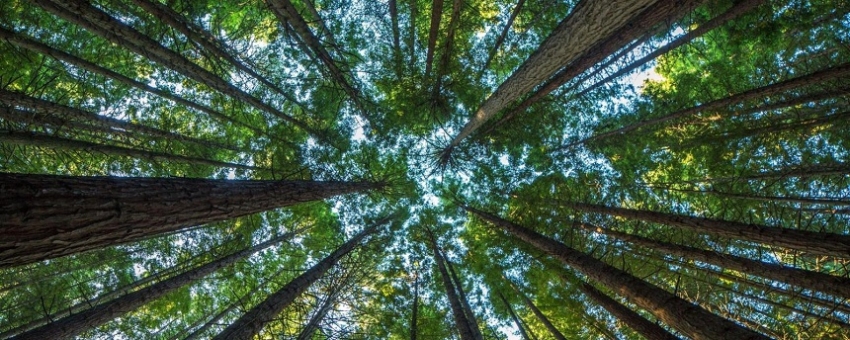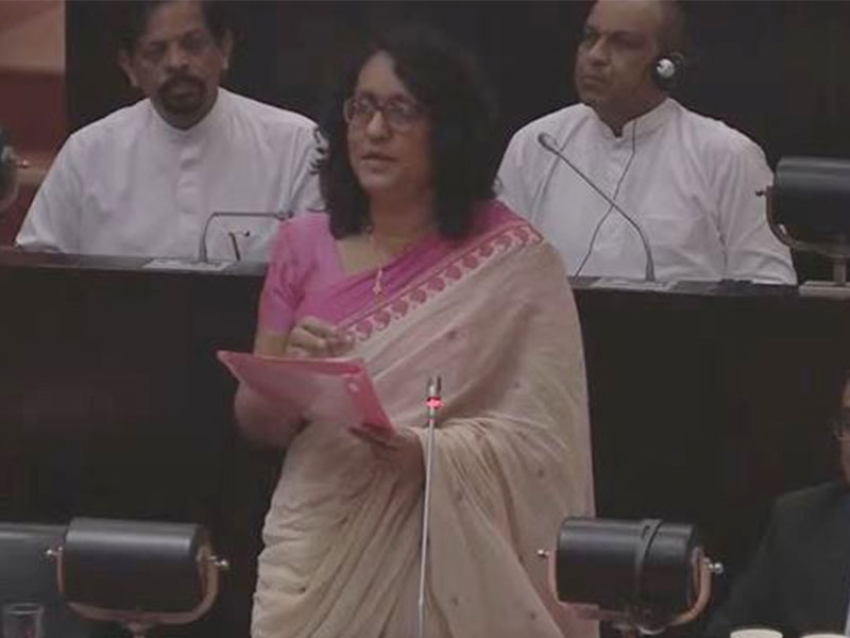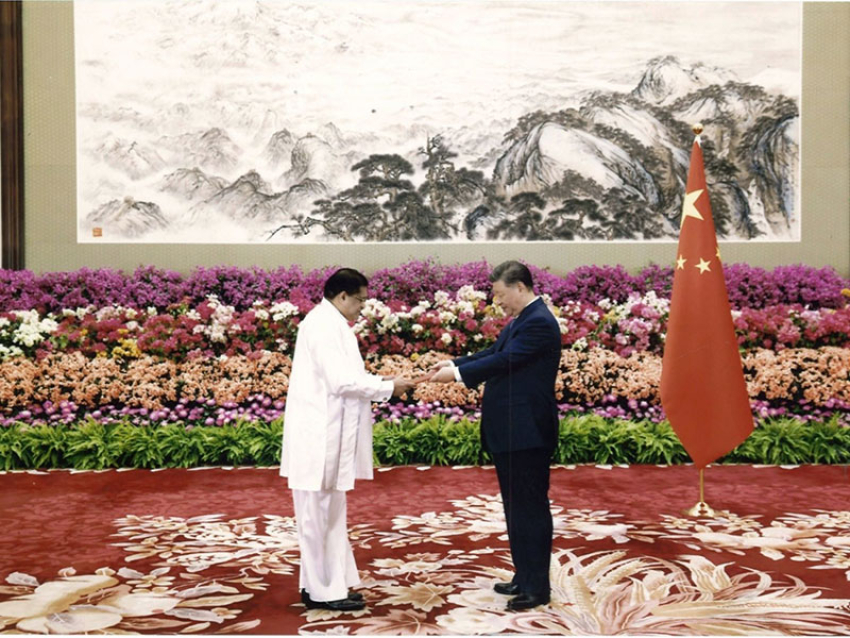As the Amazon fires continue to burn, Rachel Nuwer asks: how dependent are we on the survival of forests?
By Rachel Nuwer
In Mad Max: Fury Road, Charlize Theron’s Furiosa strives to return to “the Green Place” – a tree-filled oasis in the otherwise lifeless wasteland that the Earth has become. When Furiosa arrives at the sacred spot, however, she finds only skeletal trunks and sprawling dunes. She screams in anguish. Without trees, all hope seems lost.Furiosa’s feelings were justified. “Forests are the lifeline of our world,” says Meg Lowman, director of the Tree Foundation, a non-profit organisation in Florida that is dedicated to tree research, exploration and education. “Without them, we lose extraordinary and essential functions for life on Earth.”Trees’ services to this planet range from carbon storage and soil conservation to water cycle regulation. They support natural and human food systems and provide homes for countless species – including us, through building materials. Yet we often treat trees as disposable: as something to be harvested for economic gain or as an inconvenience in the way of human development. Since our species began practicing agriculture around 12,000 years ago, we’ve cleared nearly half of the world’s estimated 5.8 trillion trees, according to a 2015 study published in the journal Nature.
Much of the deforestation has happened in recent years. Since the onset of the industrial era, forests have declined by 32%. Especially in the tropics, many of the world’s remaining three trillion trees are falling fast, with about 15 billion cut each year, the Naturestudy states. In many places, tree loss is accelerating. In August, the National Institute for Space Research showed an 84% increase in fires in the Brazilian Amazon rainforest compared to the same period in 2018. Slash-and-burn is also especially on the rise in Indonesia and Madagascar.
Barring an unimaginable catastrophe, however, there’s no scenario under which we would fell every tree on the planet. But imagining a dystopian, Mad Max-style world in which all trees on Earth suddenly died can help us appreciate just how lost we would be without them. There would be massive extinctions of all groups of organisms, both locally and globally – Jayme Prevedello“Let me just start with how horrible a world without trees would be – they are irreplaceable,” says Isabel Rosa, a lecturer in environmental data and analysis at Bangor University in Wales. “If we get rid of all the trees, we will live [on] a planet that might not actually be able to sustain us anymore.” For starters, if trees disappeared overnight, so would much of the planet’s biodiversity. Habitat loss is already the primary driver of extinction worldwide, so the destruction of all remaining forests would be “catastrophic” for plants, animals, fungi and more, says Jayme Prevedello, an ecologist at Rio de Janeiro State University in Brazil. “There would be massive extinctions of all groups of organisms, both locally and globally.”The wave of extinctions would extend beyond forests, depleting wildlife that depends on single trees and small stands of trees as well. In 2018, Prevedello and his colleagues found, for example, that overall species richness was 50 to 100% higher in areas with scattered trees than in open areas. “Even a single, isolated tree in an open area can act as a biodiversity ‘magnet,’ attracting and providing resources for many animals and plants,” Prevedello says. “Therefore, losing even individual trees can severely impact biodiversity locally.”
The loss of trees from the world would throw the climate off kilter (Credit: Getty Images)
The planet’s climate would also be drastically altered in the short and long term. Trees mediate the water cycle by acting as biological pumps: they suck water from the soil and deposit it into the atmosphere by transforming it from liquid to vapour. By doing this, forests contribute to cloud formation and precipitation. Trees also prevent flooding by trapping water rather than letting it rush into lakes and rivers, and by buffering coastal communities from storm surges. They keep soil in place that would otherwise wash away in rain, and their root structures help microbial communities thrive.Without trees, formerly forested areas would become drier and more prone to extreme droughts. When rain did come, flooding would be disastrous. Massive erosion would impact oceans, smothering coral reefs and other marine habitats. Islands stripped of trees would lose their barriers to the ocean, and many would be washed away. “Removing trees means losing huge amounts of land to the ocean,” says Thomas Crowther, a global systems ecologist at ETH Zurich in Switzerland and lead author of the 2015 Naturestudy.
In addition to mediating the water cycle, trees have a localised cooling effect. They provide shade that maintains soil temperatures and, as the darkest thing in the landscape, they absorb heat rather than reflect it. In the process of evapotranspiration, they also channel energy from solar radiation into converting liquid water into vapour. With all of those cooling services lost, most places where trees formerly stood would immediately become warmer. In another study, Prevedello and his colleagues found that complete removal of a 25 sq km patch of forest caused local annual temperatures to increase by at least 2C in tropical areas and 1C in temperate areas. Researchers have also found similar temperature differences when comparing forested and open areas.
Deforestation is a significant contributor to global carbon emissions, according to the IPCC (Credit: Getty Images)
On a global scale, trees combat warming caused by climate change by storing carbon in their trunks and removing carbon dioxide from the atmosphere. Deforestation already accounts for 13% of total global carbon emissions, according to an IPCC report published in August, while land use change in general accounts for 23% of emissions. With all trees on the planet wiped out, previously forested ecosystems “would become only a source of emission of carbon dioxide into the atmosphere, rather than a sink,” says Paolo D'Odorico, a professor of environmental science at the University of California, Berkeley.
Large amounts of carbon would run into the oceans, causing extreme acidification and killing possibly everything but jellyfish Over time, Crowther predicts that we would see the release of 450 gigatonnes of carbon into the atmosphere – more than doubling the amount that humans have already contributed. For a while, this effect would be offset by smaller plants and grasses. But while smaller plants capture carbon at a faster rate than trees, they also release it more rapidly. Eventually – perhaps over a few decades – these plants would no longer be able to head off the coming warming. “The timeline depends on where you are, since decomposition is much faster in the tropics than the Arctic,” D’Odorico says. “But once carbon dioxide is in the atmosphere, it doesn’t matter if it’s coming from here or from there.”
As decomposition slowly detonated this ticking carbon bomb, the Earth would transform into a “vastly” warmer planet, Crowther says – the likes of which we haven’t experienced since before trees evolved. Large amounts of carbon would also run into the oceans, causing extreme acidification and killing possibly everything but jellyfish, he says.Trees help to cool the local climate by absorbing heat. Without them, temperatures would soon begin to rise (Credit: Getty Images)Humanity’s suffering would begin well before catastrophic global warming took place, however. The increased heat, disruption to the water cycle and loss of shade would take a deadly toll on billions of people and livestock. Poverty and death would also descend on many of the 1.6 billion people who currently rely directly on forests for their livelihoods, including for harvesting food and medicine. More people still would find themselves unable to cook or heat their homes, given the lack of firewood. Around the world, those whose work revolves around trees – whether as loggers or paper-makers, fruit growers or carpenters – would suddenly be jobless, devastating the global economy. The timber sector alone provides employment to 13.2 million people and generates $600bn (£500bn) each year, according to the World Bank.
Agricultural systems would likewise swing wildly out of whack. Shade crops like coffee would drastically decline, as would ones that rely on tree-dwelling pollinators. Due to temperature and precipitation fluctuations, places that formerly produced crops would suddenly fail while others that were previously unsuitable might become desirable. Over time, though, soils everywhere would become depleted, requiring significant amounts of fertiliser for crops to survive. Further heating would eventually render most places uncultivatable and unliveable.
On top of these devastating changes would be health impacts. Trees clean the air by absorbing pollutants and trapping particulate matter on their leaves, branches and trunks. Researchers from the US Forest Service have calculated that trees in the US alone remove 17.4 million tonnes of air pollution each year, a service valued at $6.8bn (£5.6bn). At least 850 lives are saved as a result and at least 670,000 cases of acute respiratory issues are avoided.
Trees help to absorb air pollution by trapping particulates in their tissues (Credit: Getty Images)
D’Odorico adds that we might also see outbreaks of rare or novel diseases transferred from species that we normally do not come into contact with. He and his colleagues found that Ebola’s transfer into humans occurs in hotspots of forest fragmentation. A sudden loss of forests everywhere could trigger a temporary spike in our exposure to zoonotic infections such as Ebola, Nipah virus and West Nile virus, he says, as well as to mosquito-borne diseases like malaria and dengue fever.
A growing body of research also points to the fact that trees and nature are good for our mental wellbeing. New York State’s Department of Environmental Conservation, for example, recommends walking in forests to boost overall health, including for reducing stress, increasing energy levels and improving sleep. Trees also seem to help the body recover: a famous study from 1984 revealed that patients recuperating from surgery experienced shorter hospital stays if they had a green view rather than one of a brick wall. More recent research revealed that spending time around grass and trees reduces symptoms in children with attention deficit hyperactivity disorder, and numerous studies have also documented a positive correlation between green space and kids’ performances in school. Trees may even help to combat crime: one study found that a 10% increase in tree cover was associated with a 12% reduction in crime in Baltimore.
“So many things that lead to physical and mental wellbeing issues can be significantly reduced by spending time in a forested environment,” says Kathy Willis, a professor of biodiversity at the University of Oxford. “That’s why ‘forest bathing’ is now a medical prescription in Japan.”
Trees play a vital role in many cultures - if lost, they would be deeply mourned (Credit: Getty Images)
The loss of trees would also be mourned on a deep, cultural level. Trees are staples of countless childhoods and feature heavily in art, literature, poetry, music and more. They have factored into animistic religions since prehistory and play prominent roles in other major religions practiced today. Buddha attained enlightenment after sitting beneath the Bodhi Tree for 49 days, while Hindus worship at Peepal trees, which serve as a symbol for Vishnu. In the Torah and Old Testament, God makes trees on the third day of creation – even before animals or humans – and in the Bible, Jesus dies on a wooden cross built from trees.“A lot of people view forests with dollar signs,” Lowman says. “But we’ve never come up with a monetary figure for the spiritual importance of forests.”Even if we could live in a world without trees, who would want to? – Thomas CrowtherAll told, human beings would struggle to survive in a world without trees. Urbanised, Western lifestyles would quickly become a thing of the past and many of us would die from starvation, heat, drought and floods. Surviving communities, Lowman believes, would likely be those that have retained traditional knowledge about how to live in treeless environments, such as Australia’s Aboriginals. Crowther, on the other hand, suspects that life would only persist in a Mars-like colony, enabled by technology and entirely divorced from the existence we have always known.
“Even if we could live in a world without trees, who would want to?” Crowther says. “This planet is unique from everything else we currently know in the universe because of this unexplainable thing called life, and without trees, almost all of it would just be screwed.”
How Japan’s ancient trees could tell the future
Locked inside the wood of Japan’s hinoki trees is an unprecedented 2,600 year-long record of rainfall patterns that are helping to piece together how weather shapes society.
By Rachel Nuwer, in Kyoto, Japan
At his laboratory in a wooded grove in northern Kyoto, Takeshi Nakatsuka holds up a vacuum sealed bag. Inside, bobbing in a bath of brown water, is a glistening disk the size of a dinner plate and the color of rich gravy. This soggy circle is the remnants of a 2,800-3,000-year-old tree, recovered from a wetland – water included, so the spongy wood does not deform – in Japan’s Shimane Prefecture, just north of Hiroshima. Within this ancient trunk lie secrets that can help us prepare for the future.Nakatsuka, a palaeoclimatologist at Japan’s Research Institute for Humanity and Nature, along with a diverse team of 68 collaborators, has spent the last decade developing a novel method to reveal bygone precipitation patterns and interpret their effect on society. The results offer unprecedented insight into 2,600 years of Japanese rainfall patterns. By teasing out information locked inside the preserved wood of ancient forests, they are able to reveal just how much rain fell around the country over the past two and half millennia. It is an extraordinary record.
About every 400 years, the researchers found, the amount of rain falling on Japan would suddenly become extremely variable for a period. The nation would toggle between multi-decadal bouts of flood-inducing wetness and warmer, drier years that were favorable for rice cultivation. As the rains came and went, Japanese society prospered or suffered accordingly.
Takeshi Nakatsuka with a 2,800-3,000 year old tree stump (Credit: Rachel Nuwer)
Palaeoclimatologist Takeshi Nakatsuka is using information preserved inside ancient tree stumps to learn about Japan's climate in the past (Credit: Rachel Nuwer)
“Multi-decadal variability provides us with the chance to transform as well as the chance to collapse,” Nakatsuka says. Regardless of the outcome, he emphasises that such change caused large amounts of stress for the people who lived through it.
As weather patterns today increasingly defy expectations, this window into past climate variability hints at what may be in store for us in the coming yearsAs weather patterns today increasingly defy expectations and extreme events become more frequent and severe, this window into past climate variability hints at what may be in store for us in the coming years. “Today is not different than 1,000 or 2,000 years ago,” Nakatsuka says. “We still have the same lifespans and we are still facing large, stressful multi-decadal variation.”
Nakatsuka builds a picture of what happened in the past using a number of proxies, including tree rings, corals, stalagmites, ice cores and sediment. But his latest findings, which he and his colleagues are currently preparing for publication, primarily rely on a new method that uses isotope ratios contained within wood to estimate precipitation patterns.
Central Japan is a perfect location for such a study because of the multitude of hinoki, a type of long-lived cypress. Nakatsuka’s study includes data from 68 hinoki, whose samples he sourced from living trees, buried logs, wooden temples, coffin boards and more. All of the wood ranged in age from 100 to 1,000 years.
The ratio of oxygen isotopes in the tree rings within the wood help to link it to environmental conditions in which it grew. On dry days, leaves lose more water and are left with a higher isotope ratio than on wetter ones, helping to give information about the relative humidity in the atmosphere.
“This is a very simple but very strict relationship,” Nakatsuka says. Modern meteorological databases confirmed that the isotope ratios of the most recently-lived trees in his dataset did indeed provide an accurate read on summer precipitation.
Japanese cypress trees (Credit: Getty Images)
Hinoki, a type of long-lived cypress that grows in many parts of central Japan, record the yearly changes in rainfall (Credit: Getty Images)
Isotope signatures, it turns out, also serve as time’s fingerprints: they are unique to the year in which they were created. Nakatsuka worked backwards, starting from a living tree whose age he knew. He used archeological and historic clues to approximate the centuries in which new tree samples lived. He then lined up their individual isotope signatures with other trees in his database that lived around the same time until he found the matching, overlapping pattern they shared. In this way, he stitched together a cohesive timeline from 600 BC to 2000 AD, creating a master chronology.
“Every tree in the master chronology is connected to the present,” Nakatsuka says. “It’s very accurate but time consuming and extensive work compared to traditional tree ring studies.”
While his timeline was able to reveal the erratic rise and fall of precipitation levels every 400 years or so, it didn’t tell Nakatsuka anything about what caused these oscillating patterns. The changes in rainfall he saw occurring every few decades closely matched previous data from conventional tree ring studies, though, and the multi-centurial and millennial patterns also lined up well with many previous reconstructions of past temperature fluctuations in East Asia and the world.
Collaborating with archaeologists and historians, Nakatsuka has been able to unravel what effect these changes in rainfall had on the people who lived at the time. Rainfall patterns over shorter and longer timescales corresponded, for example, to medieval ceremonies led by celebrity priests who prayed for rain. The development of irrigation systems and cooperative groundwater technologies meant to protect against drought also occurred at times when his record showed rainfall was low. As did the creation of government policies designed to rescue subjects from starvation during periods of famine. Most importantly, multi-decadal rainfall fluctuation neatly bookended major epochs in Japanese and Chinese history.
We archaeologists thought of the state formation process mainly in terms of social change, but now we can understand that floods are the background of such social change – Kunihiko Wakabayashi
“Before Nakatsuka’s analysis, we archaeologists thought of the state formation process mainly in terms of social change,” says Kunihiko Wakabayashi, a prehistorical archeologist at Doshisha University in Kyoto, who studies distributions of ancient human habitats around Osaka. “But now we can understand that floods are the background of such social changes.”
During the Yayoi period (1000 BC to 350 AD), for example, most human settlements near the Yoda River in Central Japan occurred in lowland delta areas. Rice cultivation began at that time and became a central part of life. People built peat homes alongside small rice paddies and tended to their plots individually. If waters shifted, people simply moved their homes to a nearby site, avoiding any large-scale upheaval.
A graduate student slices wood into thin samples (Credit: Rachel Nuwer)
By slicing the wood into thin samples, the researchers can extract cellulose for isotope analysis (Credit: Rachel Nuwer)
Around 100 BC, however, things began to change. The temperature dropped and rain increased. More and more people began to relocate further and further uphill—a sign, Wakabayashi says, of social confusion caused by frequent floods. The 5th century especially was marked by “a very unnatural, extreme movement of settlements up into the mountains,” Wakabayashi says.
Japan: Untold Stories
Welcome to BBC Future Now's Japan season, in which we explore the country's most exciting medical, technological, environmental and social trends.
You can discover:
The samurai swordsmith designing a spaceprobe
Why 'flammable ice' may solve an energy crisis
Ikumen: The rise of Japan's 'hunky dads'
The 'cathedral' protecting Tokyo from floods
And much more here.
By the beginning of the Kofun era (3rd to 6th Centuries AD), hardly any homes were left in the valley. Climate change was the catalyst that drove this process, but social factors quickly emerged as a result and created added layers of change.
“Local chiefs used environmental crises to rearrange social structures,” Wakabayashi says. Rice paddies, for example, began to be managed by chiefs. The people who worked those larger fields no longer lived adjacent to them, but uphill from their plots, and they no longer were the sole beneficiaries of their labours. A specialised class of ironworkers emerged and huge, 200-meter long tombs began to be erected, marking a sharp deviation from the small family plots that came before and an indicator of the social hierarchy emerging in Japanese society.
As the rains finally subsided in the 7th Century, people began to move back downhill and entered into the Asuka period, in which Buddhism was introduced, laws were created and Japan’s early state was formed.
Ancient history leaves few written traces, but more recent years are marked by increasing numbers of correspondences and records that historians can use to track climate-driven social fluctuations. Given Japan’s high past literacy rates and generations-long family systems, it is a gold mine for documents dating back to the 8th century. During the Tokugawa period (1603 to 1867), for example, historic documents tell us that Japan ran on an agricultural economy. Peasants paid taxes in rice and the Dojima Rice Exchange, a central market where brokers auctioned rice to merchants, sprang up in Osaka.
The stone chamber of Ishibutai Kofun (Credit: Getty Images)
Between the 3rd and 6th Centuries AD, large tombs known as Kofun began appearing as the social hierarchies in Japan changed (Credit: Getty Images)
Yasuo Takatsuki, an economic historian at Kobe University who studies economic barometers of early modern Japanese society, often scours specialised bookstores in Tokyo and Osaka for the centuries-old certificates – each of which represented 1,500 kg of rice – that resulted from sales at the Osaka auction house. The tickets show that prices over the Tokugawa period steadily declined, which lead to the world’s first known futures market.
“Local lords and the shogunate were very anxious about falling revenue, so they permitted speculation in the rice market based on derivatives,” Takatsuki says. “After that, anyone could join the market, including very small merchants.”
Most historians believe that Japan’s lack of population growth during the Tokugawa period created the excess supply of rice that led to its unique market. But Nakatsuka’s climate data indicate that favourable conditions for growing rice contributed much of the surplus behind the falling prices. “At that time, demand was stable and Japan had a closed economy, so only supply decided rice prices,” Takatsuki says. “And what decided the supply of rice? It’s climate, very clearly.”
Takatsuki also found that a one-off disaster – a flood that only impacted a single region of Japan, for example – did not influence rice prices or cause famine, but that blanket abnormalities across the entire country did. “In cases when the market economy failed to mitigate shocks from climate change, some speculators made big trades in derivatives, greatly exaggerating the price of rice,” Takatsuki says. Their eagerness to turn a profit at the expense of the population caused the Tokugawa shogunate to step in and restrict price fluctuations in order to save subjects from starvation. In some cases, the shogunate went so far as to throw certain traders in jail.
Researcher Li Zhen examines cellulose samples (Credit: Rachel Nuwer)
The samples examined by Nakatsuka's team have helped them to build up an unparrelled picture of rainfall over the past 2,600 years (Credit: Rachel Nuwer)
Knowledge of past weather conditions, Takatsuki says, “makes for a richer picture of history”—one that may also say something about how markets could respond to future shortages caused by climate change.
One resounding message that emerged from these and other findings, Nakatsuka says, is that people quickly become accustomed to favorable conditions. “If there’s a good stretch of just one to two years, people don’t adapt, they just thank the gods,” he says. “But if the favorable conditions continue over ten or twenty years, people increase their population, change their lifestyles and living standards, and get used to eating rice daily.”
When those good times abruptly come to an end, society cannot adapt. Devastation tends to ensure in the form of famine
But when those good times abruptly come to an end, he continues, society cannot adapt quickly enough. Devastation tends to ensue in the form of famine. Society also becomes more prone to conflict, especially if environmental impacts are not evenly distributed across the entire country, cleaving the population between haves and have-nots. Regional severe flooding in the late 13th and 14th Centuries, for example, sparked an upsurge in crime and local wars.
The world today, of course, is much more globalised and technologically savvy than that that of centuries ago. “Now, if the temperature drops, we can import rice from foreign countries and we don’t starve,” says Nakatsuka.
People in the rain in modern Japan (Credit: Getty Images)
Details about how Japan's people coped with changes in their climate in the past will provide clues about how they will deal with it in the future (Credit: Getty Images)
But we are still human beings, he continues, and we are still bound by the fact that change triggers stress, which in turn drives societal upheaval. Mounting discontent and fear over changing culture, demographics, climate and economies will likely only worsen in coming years, increasing the appeal of authoritarian, populist-style governance.
Nakatsuka and his colleagues believe history is spotted with many cases of multi-decadal-driven change. Some examples outside of their study are already known. Researchers in the US and Mongolia recently discovered, for instance, that Genghis Khan’s rise to power and conquest of China corresponded to a 15-year period of exceptional rainfall, which provided the great khan with the surplus livestock he needed to support an army. Nakatsuka and his colleagues hope that their project inspires others around the world to undertake similar investigations of the factors that determined whether bygone societies sank or swam in the face of climate change.
And as our current climate is expected to undergo unprecedented levels of change in the coming decades, the past may hold clues for what we should be preparing for.
“Human history includes many examples from which we can extract common lessons relevant to contemporary global environmental change,” Nakatsuka says. “The lesson for us now is that we must prepare to reduce the damage.”




















